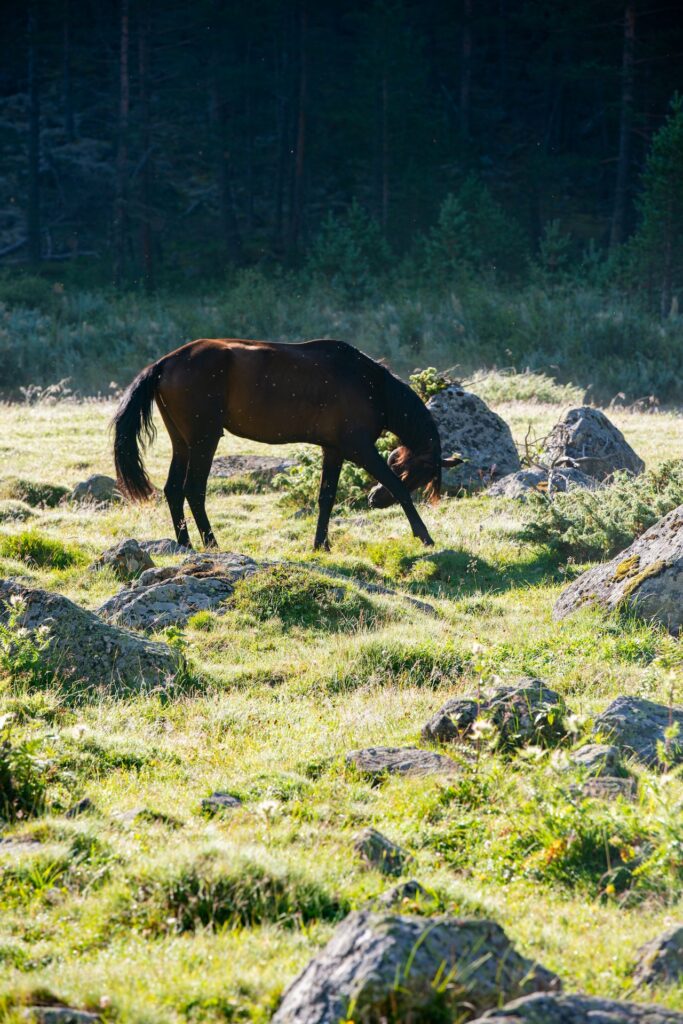Horse Nose Bleed: Causes and Treatment
Call all horse owners! In this article, we’re going to discuss horse nose bleed and their causes as well as treatment methods. So whether you are a horse owner or considering getting one, read on for some valuable information!
What is a Horse Nosebleed?
A horse nosebleed, also known as epistaxis, is the occurrence of blood coming from the nostrils caused by a ruptured blood vessel. It’s important to be aware of the signs and symptoms of a nosebleed.
Causes of Horse Nose Bleeds
There are several possible causes for a horse’s nosebleed.
Some of these include:
– Inhaling dust or other particles that irritate the nasal passage
– Allergies or environmental irritants such as pollen
– Trauma to the head or face, such as hitting a hard surface with their nose
– Infection or disease such as rhinitis
– Irritation from cold weather, overly dry air, or smoke
– A foreign body in the nasal passage
Symptoms of Horse Nose Bleeds
The symptoms associated with a horse nose bleed depend on its severity and cause. Some general signs to look out for include:
– Bloody discharge from one or both nostrils
– Thick mucous secretion
– Loss of appetite
– Difficulty breathing
– Swelling around the nostril area
Treatment Options for Horse Nose Bleeds
The treatment plan for any given case of horse nose bleeding will depend on its underlying cause. Generally speaking.
However, some common treatments may involve:
- Providing First Aid by cleaning wound sites and applying cold compresses if necessary
- Administering antibiotics to fight infection
- Utilising anti-inflammatory medications to reduce swelling and pain
- Restricting exercise to help reduce strain on the respiratory system
- Giving supplemental oxygen to maintain adequate oxygen levels in the lungs
When a horse has a nosebleed, it is important to have the proper veterinary care on hand in case the bleeding does not stop. The first step is to identify potential causes. If your horse is prone to nose bleeds, it could be because of allergies or something more serious. Consult with your veterinarian for an accurate diagnosis.
How to Stop a Horse Nose Bleed
Once you have identified the cause of the nosebleed, you should then work on stopping it.
- To do this, start using clean cloths or gauze and apply gentle pressure to the area where the bleeding occurs.
- Occasionally check if necessary and adjust your pressure accordingly; if too much pressure is applied, it can cause further damage.
- You may also want to talk to your vet about using a hemostatic agent such as kaolin clay or silver nitrate sticks which can help stop minor bleeding.
- If the bleeding persists after applying pressure and hemostatic agents, you may need the help of a vet to perform suturing or cauterization.
NoseBleed Aftercare
Aftercare for a nosebleed includes providing plenty of fresh water so your horse remains hydrated. Pay special attention to feeding hay or other dry food sources. Try soaking them first in water before giving them over so they don’t dry out your nasal passages and potentially make the bleeding worse. Ask your vet to administer antibiotics if necessary.
If you are dealing with a persistent or severe nosebleed in your horse, do not hesitate to contact your vet immediately for advice and assistance. They can provide further treatment guidance depending on its severity and the underlying cause(s).
If you’re a horse owner, then it’s important to make sure your horse is covered in case of any unexpected medical emergencies – including horse nose bleeds. At Furrr.co.uk, we offer comprehensive pet insurance plans that cover all kinds of illnesses and injuries – so you can rest assured that your horse will be taken care of in an emergency. Get started today and protect your horse with Furrr!










